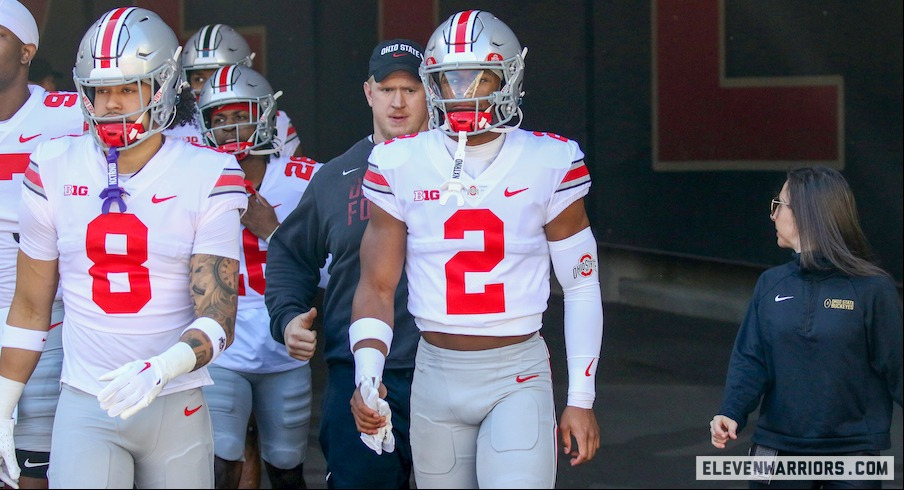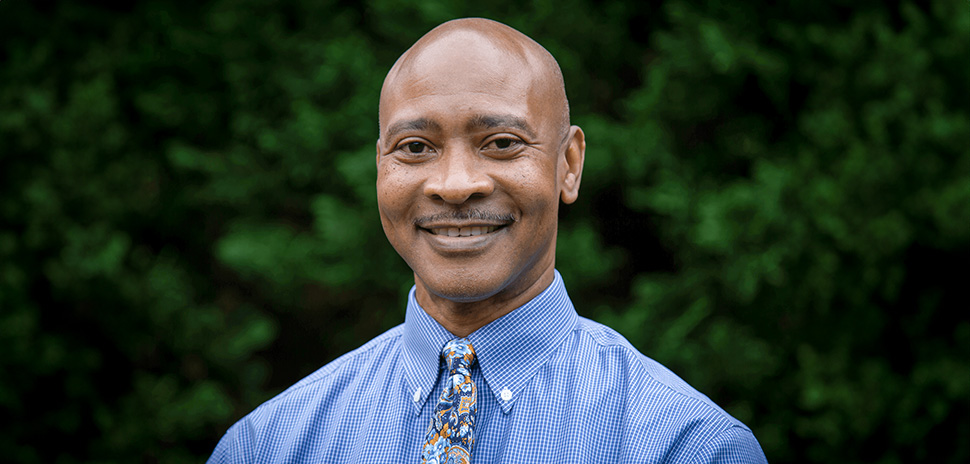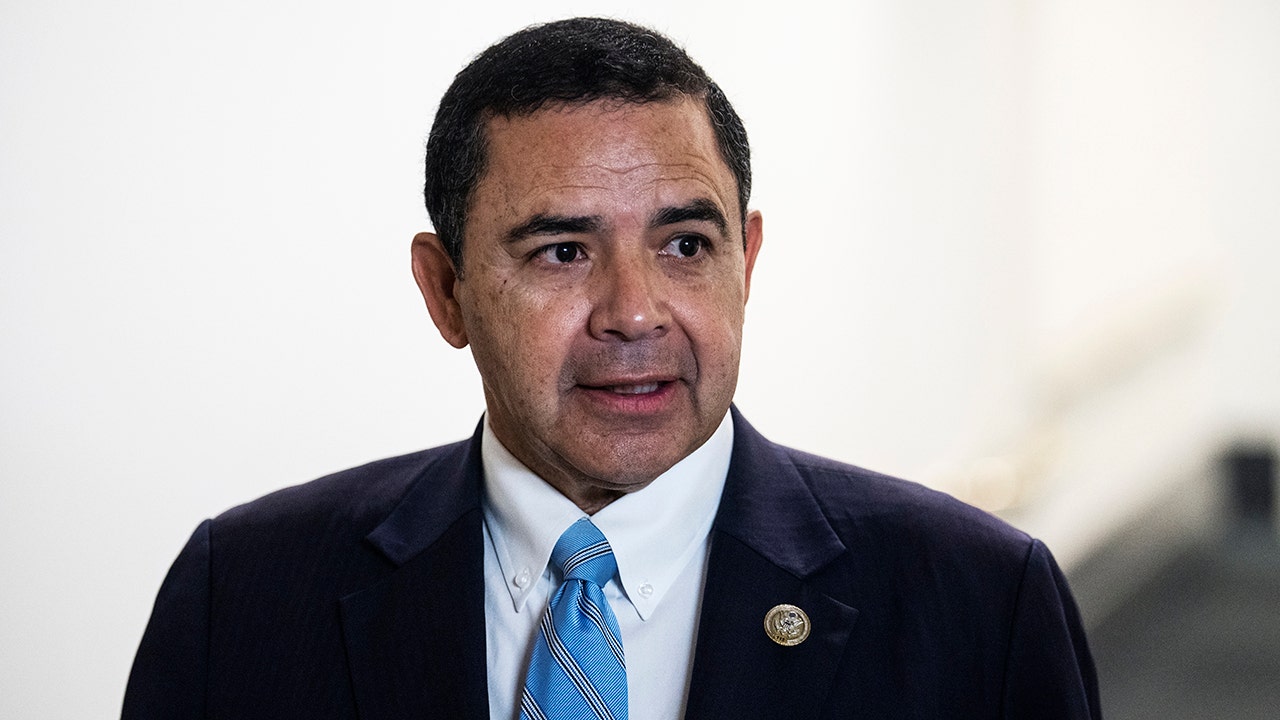Ohio
Ohio Wesleyan to become tuition-free for lower-income Delaware County students
FAFSA delay leaves millions of students in limbo
Millions of college students rely on the FAFSA to help pay their tuition. But this year, delays in that program are leaving students in limbo.
Scripps News
At Ohio Wesleyan University, history seems to happen on the stage at University Hall’s Gray Chapel.
The chapel has been graced by change-makers like Congressman John Lewis, Olympian Wilma Rudolph, U.S. President Gerald Ford and First Lady Eleanor Roosevelt. When President Theodore Roosevelt visited Gray Chapel 124 years ago, the student newspaper reported that the excitement on campus was palpable.
Ohio Wesleyan President Matt vandenBerg tried to conjure that same excitement Friday morning during his inauguration ceremony at Gray Chapel, where he made some history of his own.
Higher education: Columbus State, Ohio Wesleyan partnership could save students thousands on tuition
VandenBerg announced a number of projects and initiatives, including the new Delaware County Promise, which will provide full-tuition scholarships to Ohio Wesleyan for qualifying students from Delaware County.
Beginning this fall, all high school students who live in or go to school in Delaware County, who have a 3.5 or higher grade-point average, and who’s family has an annual adjusted gross income of less than $100,000 will be able to attend Ohio Wesleyan tuition-free.
VandenBerg said the Delaware County Promise is a way to say thank you to the place that has supported OWU for more than 180 years.
He recounted how the Rev. Adam Poe visited every resident of Delaware asking for money to purchase the Mansion House, known today as Elliot Hall, to found a college for the community in 1840. Residents donated the money to Poe, and Ohio Wesleyan University was charted two years later.
OWU wouldn’t be here without the generosity of Delaware County, vandenBerg said, so it’s now only fitting to pay it forward.
Fighting “the regulars”
VandenBerg — described as a man of boldness, innovation and moxie by those who introduced him Friday morning — did not mince words in describing the challenges facing higher education today.
He noted how April 19 is a significant day in American history, “not just because of Taylor Swift’s new album release.” It was on that same day in 1775, he reminded, that Paul Revere carried the news that British troops were on their way.
But contrary to popular belief, vandenBerg said, Revere did not cry, “The British are coming.” Rather, he said, “The regulars are coming,” a name folks would’ve known then as their common enemy.
Higher education has plenty of its own “regulars” today, vandenBerg said, but these enemies aren’t necessarily human.
He described a general malaise about higher education, decades of mounting pressure, scarcity mindsets and feeling tossed back and forth between cutting programs to the bone or stretching and flexing to become all things to all people.
“To say there are difficult times in higher education is an understatement of epic proportions,” vandenBerg said. He said there is a pain that feels heightened for residential liberal arts colleges like OWU.
The problem begs the question, he said: “How should we engage the regulars of our time?”
“Our most precious asset”
VandenBerg said the answer lies with “investment in our most precious asset — our people.”
He promised faculty and staff that he will invest in better compensation and professional development, starting with a doubling of merit awards for faculty on top of cost-of-living adjustments beginning next academic year. The university will also launch a Center for Teaching, Learning and Innovation.
VandenBerg also teased a new $3-million student social hub called The MUB 3.0, a nod to OWU’s former student center housed in the Memorial Union Building. Construction is already underway on renovating the former Alpha Tau Omega fraternity house into the new student-centric space.
And he touted promising student retention rates that Ohio Wesleyan has not seen for decades.
The first-to-second-year retention rate hit 84% this academic year, up about nine percentage points in the last two years. First-generation students and Pell-eligible students are also seeing promising numbers, with retention up about 10% and 7% respectively.
The Delaware County Promise was the highlight of vandenBerg’s initiatives Friday, but he promised this was only the beginning.
“Today is a celebration of who we are and what we’re doing,” he said. “It’s not ‘mission accomplished.’ It’s ‘mission launched.’”
Sheridan Hendrix is a higher education reporter for The Columbus Dispatch. Sign up for Extra Credit, her education newsletter, here.
shendrix@dispatch.com
@sheridan120

Ohio
Avery Gach commits to Michigan over Ohio State. Is OSU’s 2025 offensive line class in trouble?
Ohio State seemed to have an idea of what Avery Gach would become.
The Buckeyes offered Gach in the middle of his sophomore season at Groves High School in Birmingham, Michigan, when the 2025 offensive lineman held one offer: Toledo.
Ohio State was first, followed days later by Michigan, months later by Michigan State and Wisconsin, and nearly a year later by programs such as Georgia, Southern California, Oklahoma and Florida State.
“In my mind, (OSU offensive line coach Justin Frye) did a tremendous job of identifying a talent not because everyone else had identified him, which is what happened afterward,” said Groves offensive coordinator Matthew Turner. “But he took the first step to make the identification.”
Ohio State made Gach a priority. But on Friday, Ohio State finished on the outside looking in as the four-star, 6-foot-5, 290-pound tackle committed to Michigan.
“It’s 45 minutes from my house,” Gach said before his Michigan commitment. “They just came off a national champion win. They brought 18 guys to the combine, which no team has done. And my main goal is to go to the NFL … so that just shows that they can do it.”
Per 247Sports’ composite rankings, Gach is the second-best Michigan prospect in the 2025 class behind five-star quarterback and LSU commit Bryce Underwood. Gach is also ranked as the No. 236 player in the country.
Groves coach Brendan Flaherty said Ohio State made Gach feel he was a priority throughout his recruiting process, from impromptu school visits by OSU assistant coaches to a tandem visit with offensive line coach Justin Frye and head coach Ryan Day.
Through multiple camp, game-day and unofficial visits to campus, Gach, Flaherty said, saw firsthand Ohio State’s pitch of how the program would get him better and help him get to the NFL.
“He’s a down-to-earth guy,” Flaherty said of Frye. “Like he’s been open and honest with Avery from the get go. I think one of Justin’s first comments was like, ‘Hey, I’m part of the process. But this is a business. You shouldn’t make a decision on picking a school on just your position coach or one coach. There’s a lot of factors here. I’m going to take care of you. Here’s how I coach, here’s what I do.’ ”
Gach said Ohio State “took a chance” on him as his second offer and that the Buckeyes were always good to his family.
But to Gach, no school provided the relationship Sherrone Moore provided him, having recruited him initially as Michigan’s offensive line coach before filling Jim Harbaugh’s shoes as the team’s head coach.
“There’s not a school that has done that,” Gach said. “I don’t think there’s a head coach that I’ve built a relationship with as well as coach Moore.”
What’s next for Ohio State offensive line recruiting in 2025?
Ohio State has already started its 2025 offensive line class with a prospect it desperately needed to secure.
Carter Lowe, a Toledo four-star tackle and the No. 50 prospect in the country, committed to the Buckeyes over Michigan in February. Lowe said after the OSU spring game he feels “completely at home” with Ohio State.
Of Frye’s eight signees in the 2023 and 2024 classes, five have been from Ohio, including the state’s top option in 2023, Luke Montgomery.
When it comes to out-of-state signees under Frye, one has entered Ohio State as a top-200 prospect: Indiana 2024 four-star Ian Moore. Ohio State finished as finalists for five-star Kadyn Proctor (Alabama) and four-star Olaus Alinen (Alabama) in 2023 and five-star Brandon Baker (Texas) in 2024.
In 2025, with Lowe already in the fold, Frye and Ohio State find themselves in a similar situation.
Ohio State is a finalist for David Sanders Jr., a 6-6, 285-pound five-star offensive tackle out of Charlotte, North Carolina, who is the No. 2 prospect in the class.
Providence Day School coach Chad Grier said Sanders is an NFL shoe-in and already puts up testing numbers that “would have been exceptional at the NFL combine.”
Grier said Ohio State has “done a great job” recruiting Sanders.
“The program speaks for itself,” Grier said. “David knows that and surely knows the pedigree of the guys that have come out of there and the guys that coach Day has been a part of producing.”
But Ohio State is one of six finalists vying for Sanders’ services along with Alabama, Clemson, Georgia, South Carolina and Tennessee.
“It was no small feat to cut a list from 130 to six,” Grier said. “He left some really great programs and coaches he cared about off that list. But the final six were thoughtful and deliberate, and Ohio State earned the right to be on that stage with David.”
Sanders may be at the top of the list. But he’s not the Buckeyes’ only offensive line target in 2025. He’s joined by four-star Micah DeBose, four-star Douglas Utu and five-star Josh Petty, each of whom are top-100 linemen from outside of Ohio.
In the days leading up to Gach’s commitment to Michigan, Ohio State’s offensive line offer list grew to include Fort Worth, Texas, three-star Henry Fenuku and Roswell, Georgia’s Andrew Stargel, who is not ranked on 247Sports’ composite rankings but holds offers from Kentucky and Cincinnati.
Like Sanders, Ohio State was “on that stage” for Gach. The Buckeyes were there at the beginning, but came up short and will instead have to face him for the next three to four seasons.
Missing Gach is not the end-all, be-all of Ohio State’s 2025 offensive line recruiting class. But Gach is another miss on a list of highly-coveted misses, one that can only end with a highly-coveted out-of-state offensive line recruiting win.
Get more Ohio State football news by listening to our podcasts
cgay@dispatch.com
Ohio
How Ohio State’s 2024 Roster Stacks Up at Every Position Following the Transfer Portal Entry Deadline

Ohio State currently has 80 players on scholarship for the 2024 season, and it now knows that none of those players will transfer elsewhere this year.
The Buckeyes lost six players during the post-spring transfer portal entry window – running back Dallan Hayden, wide receiver Kyion Grayes, guard Enokk Vimahi, linebacker Nigel Glover and safeties Ja’Had Carter and Cedrick Hawkins – but kept the core intact of what they expect to be a championship-caliber roster.
Now five scholarships under the 85-man limit, Ohio State could still add a few players to its 2024 roster to bolster its depth. While the deadline to enter the portal has now passed, players already in the portal can still transfer to new schools. The Buckeyes have reportedly been in contact with Michigan State defensive tackle Derrick Harmon (per On3) as well as a trio of safeties: Michigan State’s Jaden Mangham and Sacramento State’s Cameron Broussard, per 247Sports, as well as Texas A&M transfer Jacoby Mathews. Offensive line has been seen as the top-priority position for a post-spring transfer addition, though there doesn’t appear to be a wealth of Ohio State-caliber linemen in the portal.
With that in mind, we take a look at how Ohio State’s roster stacks up following the year’s final portal entry deadline to assess the Buckeyes’ depth at each position and where they could potentially look to fill out the roster with another transfer addition.
The counts below only include scholarship players, though notable walk-ons who could potentially be candidates for any leftover scholarships are mentioned in the analysis below each position group.
Quarterbacks (5): Will Howard (R-Sr.), Devin Brown (R-So.), Lincoln Kienholz (R-Fr.), Julian Sayin (Fr.), Air Noland (Fr.)
While a starting quarterback still needs to emerge from this group, Ohio State has the luxury of tremendous quarterback depth. Ryan Day would be happy to have four scholarship quarterbacks, and it’s exceedingly rare for a team to have five scholarship quarterbacks in the transfer portal age.
There’s no shortage of talent throughout this group. Howard earned second-team All-Big 12 honors last year at Kansas State. Sayin, Brown and Noland were all top-60 overall prospects in their recruiting classes. Kienholz was USA TODAY’s boys’ high school athlete of the year in 2023. Howard remains the frontrunner to start this season, but they all have enough upside to start at Ohio State after choosing to stick around for at least this year.
Running Backs (4): TreVeyon Henderson (Sr.), Quinshon Judkins (Jr.), James Peoples (Fr.), Sam Williams-Dixon (Fr.)
Ohio State would probably like to have one more non-freshman running back on scholarship, but the top of the depth chart is loaded with Henderson and Judkins, who will split the vast majority of carries as long as both stay healthy. Peoples and Williams-Dixon both performed well this spring as early enrollees, and Day has expressed confidence that those two freshmen, as well as walk-on TC Caffey, can provide the depth the Buckeyes need at running back if they don’t add a transfer at the position.
“We’re looking for five, and I think we’re in a situation where we’ll be at five,” Day said in April after Hayden informed the coaching staff he would enter the portal. “If we need to add a sixth, then we’ll look into that. But right now, I think we’ll be in a situation where we feel comfortable with five guys.”
Wide Receivers (8): Emeka Egbuka (Sr.), Jayden Ballard (R-Jr.), Kojo Antwi (R-So.), Brandon Inniss (So.), Carnell Tate (So.), Bryson Rodgers (R-Fr.), Jeremiah Smith (Fr.), Mylan Graham (Fr.)
With Egbuka back to lead the way and Smith, Tate and Inniss all seen as being on the precipice of stardom, Ohio State’s wide receiver unit remains in great shape despite the departures of Marvin Harrison Jr., Julian Fleming and Xavier Johnson from last season.
The total number here is lower than Ohio State would like it to be – Day said a few years ago that 11 was the Buckeyes’ target number of scholarship receivers – but Brian Hartline has never been inclined to chase portal receivers. The Buckeyes have just enough depth that they don’t have to, with walk-ons David Adolph and Brennen Schramm looking the part of capable third-stringers with their performances in the spring game.
Tight Ends (6): Gee Scott Jr. (R-Sr.), Will Kacmarek (R-Jr.), Bennett Christian (R-So.), Jelani Thurman (R-Fr.), Max LeBlanc (Fr.), Damarion Witten (Fr.)
Like at quarterback, Ohio State doesn’t have a clear-cut starter at tight end – though Scott is the leader in the clubhouse – but has more than enough depth with Kacmarek, Thurman and Christian also candidates to be a part of the tight end rotation. In addition to the six tight ends on scholarship, Patrick Gurd returns to the unit after playing the most snaps of any walk-on last season (not including Johnson, who started his career as a walk-on but was placed on scholarship in 2021).
Given the surplus of depth at tight end, Witten could be a candidate to play wide receiver – at least temporarily – to balance out the numbers at the positions, as Witten has enough athleticism to play outside and will need to bulk up from his high school weight to play tight end collegiately.
Offensive Linemen (16): Josh Fryar (R-Sr.), Seth McLaughlin (R-Sr.), Donovan Jackson (Sr.), Josh Simmons (R-Jr.), Zen Michalski (R-Jr.), George Fitzpatrick (R-So.), Carson Hinzman (R-So.), Tegra Tshabola (R-So.), Luke Montgomery (So.), Joshua Padilla (R-Fr.), Austin Siereveld (R-Fr.), Miles Walker (R-Fr.), Deontae Armstrong (Fr.), Devontae Armstrong (Fr.), Ian Moore (Fr.), Gabe VanSickle (Fr.)
If the Buckeyes are going to add another starter via a post-spring transfer addition, it would be on the offensive line. Simmons (left tackle), Jackson (left guard), McLaughlin (center) and Fryar (right tackle) are all expected to be starters, but the right guard position remains wide open entering the summer.
From an overall numbers standpoint, the Buckeyes have as many scholarship offensive linemen as they need. If they can find a transfer offensive lineman who could either be an upgrade for the fifth starting spot or provide more reliability as a top backup, they shouldn’t hesitate to make an addition. If they’re unable to find such a player, three potential candidates to round out the starting lineup are Hinzman, Tshabola and Montgomery while Fitzpatrick, Michalski, Siereveld and Padilla will be the main contenders to round out the two-deep.
Defensive Ends (8): Jack Sawyer (Sr.), JT Tuimoloau (Sr.), Mitchell Melton (R-Sr.), Caden Curry (Jr.), Kenyatta Jackson (R-So.), Joshua Mickens (R-Fr.), Eddrick Houston (Fr.), Dominic Kirks (Fr.)
Led by a standout pair of returning starters in Sawyer and Tuimoloau, Ohio State’s defensive end depth chart is strong from top to bottom.
Curry, Jackson and Melton give the Buckeyes a deep rotation of veteran edge defenders with playing experience. Houston, Mickens and Kirks give Ohio State promising developmental rushers for the future, with the five-star Houston being the most likely candidate among those three to push for playing time alongside the veterans in 2024.
Defensive Tackles (8): Ty Hamilton (R-Sr.), Tyleik Williams (Sr.), Tywone Malone (R-Jr.), Hero Kanu (R-So.), Kayden McDonald (So.), Jason Moore (R-Fr.), Will Smith Jr. (R-Fr.), Eric Mensah (Fr.)
Just like at defensive end, Ohio State sits at its target number of eight scholarship players at defensive tackle with a healthy mix of veterans and youth.
Williams and Hamilton form a strong starting tandem, while Kanu, McDonald and Moore are among the younger defensive tackles who have flashed between limited action last season and this spring. Hamilton and Williams are the only returning defensive tackles who have seen considerable playing time, which gives the Buckeyes reason to consider adding another veteran like Harmon, but Ohio State will still have a well-built roster of interior defensive linemen if it doesn’t add anyone.
Linebackers (8): Cody Simon (R-Sr.), Kourt Williams (R-Sr.), C.J. Hicks (Jr.), Sonny Styles (Jr.), Gabe Powers (R-So.), Arvell Reese (So.), Payton Pierce (Fr.), Garrett Stover (Fr.)
Ohio State courted a couple of linebackers during the first transfer window of the offseason, but the Buckeyes have less need for one now that Styles is a full-time linebacker. At a position where only two to three players have seen regular playing time in Jim Knowles’ first two years as defensive coordinator, eight scholarship linebackers is enough for the Buckeyes to have healthy depth.
That’s contingent on the availability of Pierce and Williams, who were both sidelined this spring by injuries, but it’s likely that most if not all of the snaps this year will be played by some combination of Simon, Hicks, Styles, Reese and Powers. Walk-on Joey Velazquez is also a legitimate depth option and candidate to play special teams as a former scholarship player at Michigan.
Cornerbacks (9): Denzel Burke (Sr.), Jordan Hancock (Sr.), Lorenzo Styles Jr. (R-Jr.), Davison Igbinosun (Jr.), Jermaine Mathews Jr. (So.), Calvin Simpson-Hunt (R-Fr.), Aaron Scott Jr. (Fr.), Bryce West (Fr.), Miles Lockhart (Fr.)
You won’t find many better depth charts at any position in college football than Ohio State’s cornerback depth chart. The Buckeyes couldn’t have drawn it up much better than it’s currently constructed.
Burke, Igbinosun and Hancock give the Buckeyes an excellent trio of returning starters. Mathews might be the best backup cornerback in the country, and the Buckeyes are high on Simpson-Hunt and Styles’ ability to contribute off the bench, too. Scott, West and Lockhart give Ohio State a talented trio of freshmen to provide third-team depth this year while developing for the future.
Jordan Hancock, Denzel Burke and Davison Igbinosun lead the nation’s best cornerback depth chart.
Safeties (6): Lathan Ransom (Sr.), Caleb Downs (So.), Malik Hartford (So.), Jayden Bonsu (R-Fr.), Jaylen McClain (Fr.), Leroy Roker (Fr.)
Ohio State already added the best player in the transfer portal in Downs, who will team with Ransom to form an excellent tandem of starting safeties. In terms of sheer numbers, however, safety is the position where Ohio State most needs to add another transfer – and could even add two transfers – for depth purposes. Ideally, the Buckeyes would like to have at least eight safeties on scholarship; with only six, they’re an injury or two away from being in a precarious spot.
As things currently stand, the Buckeyes have just three safeties with any playing experience at the collegiate level in Downs, Ransom and Hartford. That said, Bonsu and McClain both performed well in extended reps this spring, while walk-on Inky Jones has also demonstrated the potential to be a quality depth player despite his lack of a scholarship.
Specialists (2): LS John Ferlmann (R-Jr.), P Nick McLarty (Fr.)
Ohio State addressed its lack of punting depth with the late addition to the 2024 recruiting class of McLarty, who will compete with fellow Australian Joe McGuire – a walk-on – for the starting punting job when he enrolls at OSU this summer. Ohio State will also supplement its long-snapping depth this summer with the arrival of incoming freshman walk-on Morrow Evans, the top-ranked long snapper in the 2024 class, though he’ll start out his career backing up Ferlmann.
Assuming the Buckeyes don’t add five more transfers, Jayden Fielding would be a logical candidate to receive one of Ohio State’s five open scholarships as he enters his second season as the Buckeyes’ starting kicker.
Ohio
Ohio's forests are under threat: Here's how you can help – Farm and Dairy


Portage SWCD collaborated with the Ohio Department of Natural Resources Division of Forestry and Kent Roosevelt High School’s Forestry and Landscape Management crew April 25 to remove callery pears at Phillips Park in Franklin Township.
The students also planted an Ohio native tree provided by ODNR to celebrate its 75th anniversary. Portage County received and planted a sycamore. Removing invasive species AND planting native trees — now that’s doubling down on conservation.
Ohio’s forest economy
Forest products provide a $30 billion annual economic impact in Ohio. Ohio forests also produce some of the best hardwoods in the world. So, it stands to reason that Ohio would also produce high quality wood products. Ohio ranks number one in the U.S. for high grade furniture production.
Ohio’s forests also provide much of the wildlife habitat in the state. Hunting, fishing, watercraft and parks combined contribute another $12 billion in economic impact in Ohio annually. It’s easy to make the connection between wildlife habitat and hunting. But woodlands also contribute to cleaner, cooler water which improves fishing and other water sport activities.
Threats
Ohio’s forests face many threats. Invasive plant species are a major challenge for woodlot management. Invasive insect species such as emerald ash borer, which decimated our native ash population, are changing forest composition.
Additional pests such as Asian longhorned beetle have us constantly on guard in our efforts to keep them at bay. Many invasive exotic insects were introduced unintentionally via international trade. Both EAB and ALB are believed to have arrived in pallets or other wood packaging. However, some invasive species (both plant and animal) are a result of our aesthetic preference for non-native plants.
Non-native bush honeysuckles, burning bush and barberries are just a few of the many invasive plant species that are inhibiting native hardwood regeneration in Ohio. Each of these species were intentionally brought to the U.S. through the horticultural trade industry as ornamental plants for the home landscape.
Hemlock wooly adelgid is another non-native forest pest. HWA arrived in the U.S. in the early 1900s on a Japanese Hemlock at a time when no international controls were in place. Again, it was our aesthetic preference for a non-native species that is now resulting in the devastating loss of our native hemlocks.
When to seek assistance
Foresters and resource professionals provide a variety of valuable assistance to landowners. But there are several critical times when forest owners should seek professional assistance. Seek assistance when you have an identified threat to your woodlot.
For most threats to Ohio’s forests, there is also a management strategy to help landowners protect their woodlands. Best management practices are developed by resource professionals through field-tested trials. A forester or resource professional can fast-track you to the right course of action.
If you are a woodland owner, you should be on high alert for oak wilt. Oak wilt can be managed, but it is an aggressive disease that can destroy your oaks before you even notice its presence. Don’t let this disease sneak up on you. The Wisconsin Department of Natural Resources has some excellent information to help with oak wilt identification. Seek professional assistance if you believe you have oak wilt in your woodlot.
The most critical time to seek help from a forester is when you are planning a timber harvest. Poorly managed timber harvests represent one of the most significant preventable threats to Ohio’s forests.
A poorly managed timber harvest can result in significant soil erosion and water pollution; a large number of scarred and damaged trees; reduced diversity and loss of your forest’s most commercially valuable trees; suppressed regeneration of commercially valuable or rare tree species; rapid spread of invasive exotic plant species; reduction of habitat for wildlife species of concern such as amphibians, reptiles and songbirds and a forest that is left more vulnerable to disturbance associated with pathogens and disease.
For more information about planning a timber harvest, contact ODNR Division of Forestry’s “Call Before You Cut” program prior to signing any type of contract with a timber buyer. Visit callb4ucut.com/ohio/ for more information.
Many SWCD offices also have staff that can connect landowners with resource professionals. The Ohio Society of American Foresters also maintains a directory of forestry professionals at osafdirectory.com. Your local SWCD can likely provide you with a list of consulting foresters that work in your area.
Get our Top Stories in Your Inbox
-

 News1 week ago
News1 week agoLarry Webb’s deathbed confession solves 2000 cold case murder of Susan and Natasha Carter, 10, whose remains were found hours after he died
-

 News1 week ago
News1 week agoFirst cargo ship passes through new channel since Baltimore bridge collapse
-

 World1 week ago
World1 week agoHaiti Prime Minister Ariel Henry resigns, transitional council takes power
-

 World1 week ago
World1 week agoSpanish PM Pedro Sanchez suspends public duties to 'reflect'
-

 World1 week ago
World1 week agoUS secretly sent long-range ATACMS weapons to Ukraine
-

 News1 week ago
News1 week agoAmerican Airlines passenger alleges discrimination over use of first-class restroom
-

 Movie Reviews1 week ago
Movie Reviews1 week agoHumane (2024) – Movie Review
-

 Education1 week ago
Education1 week agoVideo: Johnson Condemns Pro-Palestinian Protests at Columbia University



















